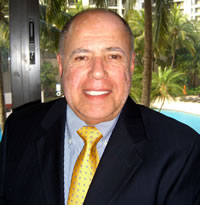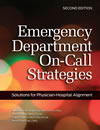All Articles
Accounting
International Trade
Alcohol, Tobacco & Other Drugs
Investigation & Surveillance
Arms - Guns - Weapons
Jails - Prisons - Correctional Facilities
Automotive - Vehicular
Land Mapping - Surveying - Zoning
Banking
Law Enforcement
Boating
Laws & Procedures
Business Management
Legal Issues
Child Welfare
Linguistics
Computer Forensics
Machinery
Design
Manufacturing
Digital / Crypto Currency
Marine - Maritime
Digital Forensics
Medical Malpractice
Engineering
Nursing
Engines (Combustion - Diesel)
Oil & Gas
Exercise & Fitness
OSHA
Failure Analysis
Patents
Feng Shui
Product Liability
Food & Beverage
Professional Malpractice
Forensic Analysis
Psychiatry
Forensics
Recreation & Sports
Hotels & Hospitality
Security
Human Factors
Sexual Abuse - Molestation - Harassment
Human Resources
Terrorism - Homeland Security
Industrial Hygiene and Safety
Warnings & Labels
Intellectual Property
Yoga
More...
expert witnesses
Keywords
Category
Name
Company
Address
State
*Enter State Names or Abbreviations. Use space to separate multiple states e.g. CA Washington NY
Country
All Articles
Accident Prevention & Safety
Internet Marketing
Accounting
Jails - Prisons - Correctional Facilities
Aquatics Safety
Land Mapping - Surveying - Zoning
Archaeology - Archeology
Legal Issues
Arms - Guns - Weapons
Manufacturing
Audio Forensics
Marine - Maritime
Banking
Mediation
Branding - Brand Management
Meditation
Child Witch Phenomenon
Obstetrics - Gynecology (OBGYN)
Corrosion
Oil & Gas
Damages
OSHA
Dram Shop Liability
Plants & Trees
Economics
Plastic / Reconstructive / Cosmetic Surgery
Elder Abuse
Product Liability
Employment
Professional Skills
Engines (Combustion - Diesel)
Public Speaking
Family Issues
Real Estate
Foreign Affairs - Geopolitics
Speech-Language Pathology
Forensic Psychiatry
Spirituality
Gems & Jewelry
Terrorism - Homeland Security
Healthcare Facilities - Hospitals
Toxicology
Industrial Hygiene and Safety
Underwriting
Insurance
Warnings & Labels
Intellectual Property
Workplace Violence
International Trade
Yoga
More...
Construction Defect Expert Witness Andrew Allocco
This Member is NOT currently an ACTIVE member.
Indian River Construction Services, Inc.
Andrew Allocco, PE
Please Contact Us for more information.

Related areas of expertise
Building Codes
Common Interest Developments / Homeowner Associations (HOA)
Construction (General)
Construction Defects
Construction Quality Control
Engineering (General)
Failure Analysis
Glass / Windows / Windowall Construction
Highways / Roads / Streets
Inspections - Construction (Carpet, other)
Insurance (General)
Lath and Plaster
Parking Lots - Parking Garages
Real Estate (General)
Real Estate: Commercial
Real Estate: Insurance
Real Estate: Residential
Restoration - Fire / Water / Mold
Structural Engineering
Tile - Stone
Building Envelope
Concrete Slabs / Foundations
Construction Claims
Construction Failure Analysis
Electrical Construction
Excavation, Trenching, Construction Site Work
Floors / Flooring
Heating Ventilating Air / HVAC
Indoor Air Quality
Inspections - Home / Residential
Insurance Adjusting
Mechanical / Plumbing / Piping / HVAC Construction
Plumbing Engineering
Real Estate: Agent / Broker - Standard of Care
Real Estate: Consulting
Real Estate: Property Inspection
Real Estate: Retail / Shopping Centers
Roofing
Swimming Pool and Spa
Waterproofing
Featured resources
Designing and Deploying 802.11n...
by Jim Geier
Expert Witnesses, Valuation, and...
by Weston Anson
Emergency Department On-Call...
by Jon Burroughs, MD, et al
Follow us










